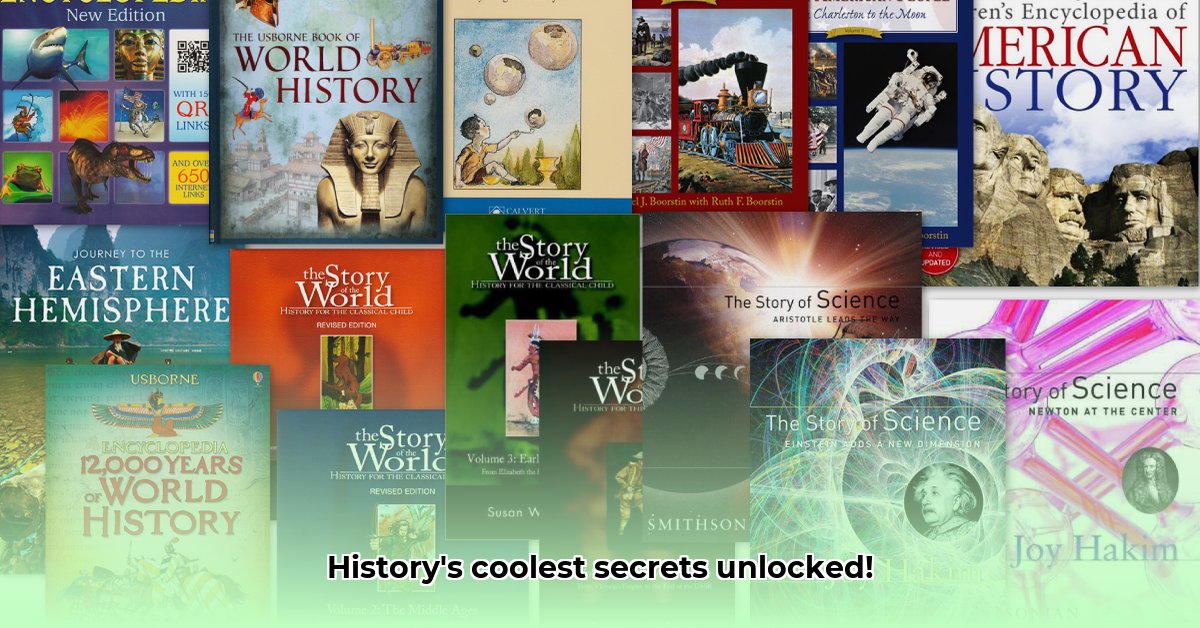History might seem like a dry subject for kids, but with the right approach, it can ignite a lifelong passion for learning. This guide empowers parents and educators to select captivating historical materials, covering diverse formats, learning styles, and perspectives. We’ll delve into how to make history come alive for the next generation by choosing effective books and utilizing them effectively at home and in the classroom. For more US history book recommendations, check out this helpful resource: Best US History Books.
Tailoring History to Young Minds: Age, Interests, and Learning Styles
Choosing a history book is akin to selecting the perfect outfit – it needs to fit. For preschoolers and early elementary students, visually rich picture books introduce historical concepts in an accessible, engaging way. As children mature, chapter books, graphic novels, and biographies offer more in-depth explorations. High schoolers can grapple with primary sources and diverse interpretations. Consider a child’s existing interests – dinosaurs, ancient civilizations, or social movements – to transform learning into an exciting adventure.
The world of children’s history books is bursting with diverse formats:
- Picture Books: Vibrant illustrations and simple narratives capture young imaginations.
- Chapter Books: Richer, lengthier narratives for growing readers.
- Graphic Novels: Combining visuals and text, ideal for visual learners.
- Biographies: Bringing history to life through the stories of fascinating individuals.
- Historical Fiction: Engaging narratives set in the past, offering alternative perspectives on historical events.
By understanding these formats and tailoring them to individual learning styles, we can create a more enriching learning experience.
Choosing Diverse Children’s History Books: Authenticity and Engagement
Diversity in children’s historical literature is paramount, but authentic representation is key. Seek out books that accurately portray diverse characters and avoid harmful stereotypes. Ask yourself: Does this book genuinely reflect historical experiences, or does it rely on clichés? Engage actively with the content, discussing the material with children to enhance understanding and critical thinking. Support publishers and authors dedicated to creating diverse and authentic historical content.
Diverse history books are powerful tools for fostering empathy and critical thinking. They provide windows into different cultures, perspectives, and experiences, enriching our understanding of the past. By exploring how various groups experienced historical events, we gain a more nuanced and comprehensive view.
Choosing Age-Appropriate History Books: A Step-by-Step Guide
Step 1: Assess Developmental Stage: Consider your child’s age, maturity level, and existing knowledge. Start with simpler narratives and gradually introduce more complex themes and historical events.
Step 2: Scrutinize Content: Preview books for potentially sensitive content. Violence, complex social issues, or mature language might not be suitable for all ages. Resources like Common Sense Media offer valuable reviews and age recommendations.
Step 3: Make Reading a Shared Experience: Transform reading into an interactive journey. Read aloud together, ask open-ended questions, and engage in meaningful discussions. This shared experience cultivates a love of history and strengthens family bonds.
Igniting a Passion for History: Proven Techniques
Picture Books: Gateways to the Past (for all ages): Don’t underestimate the power of picture books! Their engaging illustrations and accessible text can captivate learners of all ages, serving as excellent introductions to complex historical topics.
Interactive Learning: Beyond the Page: Extend learning beyond the book’s pages. Encourage role-playing, create historical crafts, visit museums and historical sites, or engage in research projects. These hands-on experiences deepen understanding and bring history to life.
Leveraging Technology: Utilize documentaries, online interactive timelines, virtual museum tours, and educational apps to create immersive learning experiences.
By following these guidelines and embracing a creative approach, we can empower children to become enthusiastic explorers of the past.
- Red Cloud, NE: Discover Willa Cather’s Legacy - April 11, 2025
- Remember Old Social Media Sites? Their Rise and Fall - April 11, 2025
- How many days till Feb 3?Accurate Countdowns & Tools - April 11, 2025
















